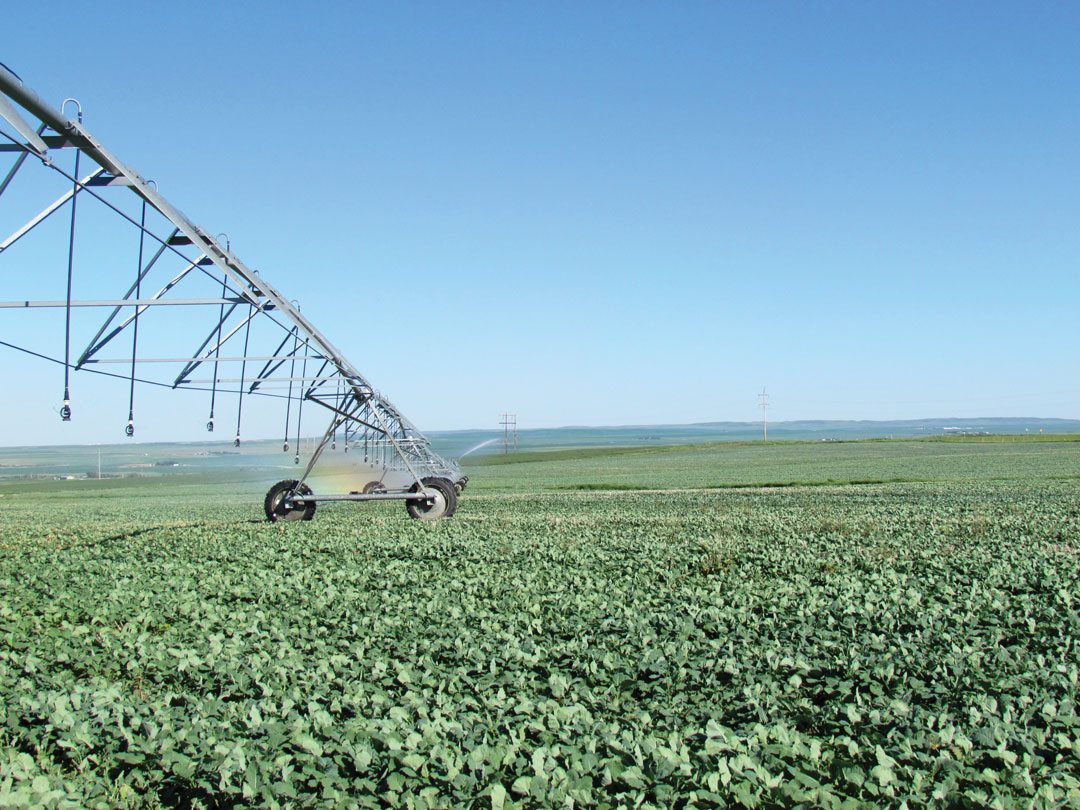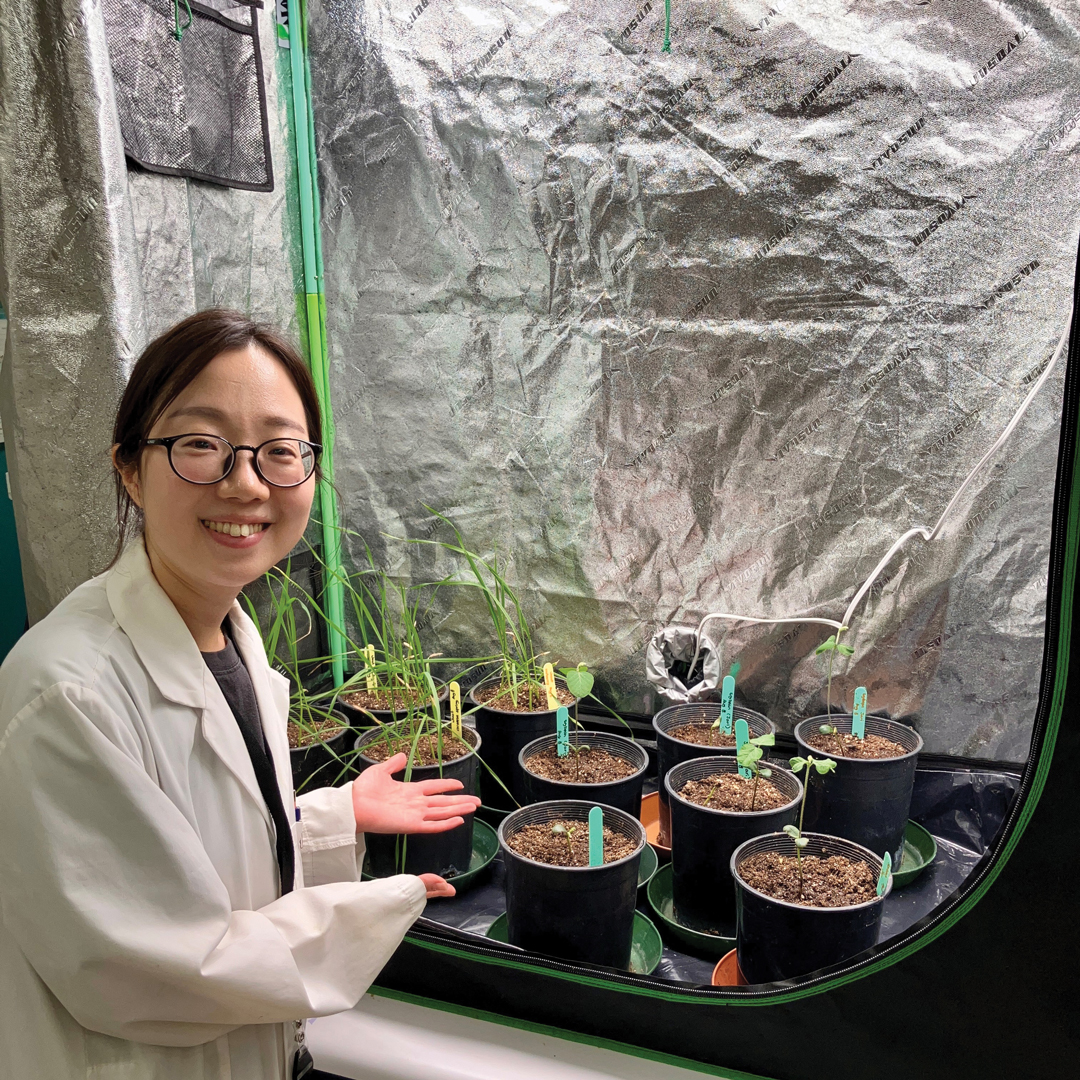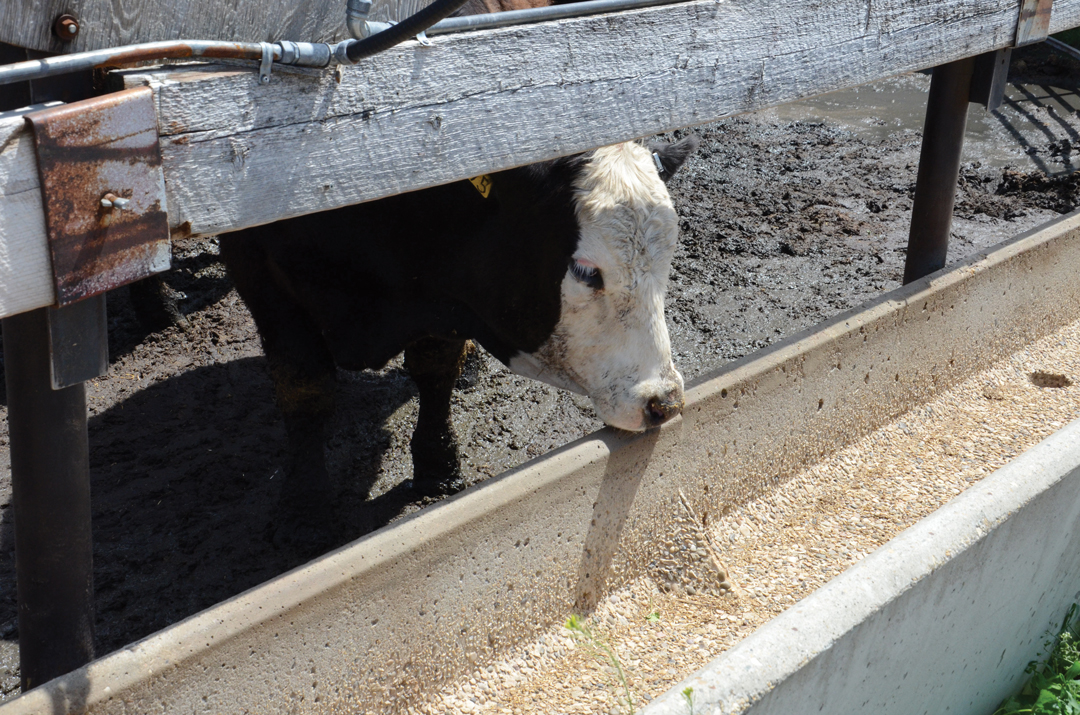A DISRUPTED CYCLE
WATER IN ALBERTA IS AS PRECIOUS AS IT GETS
BY MICHAEL FLOOD
You’re craving a cool drink on a hot day. You go into your kitchen, turn on the faucet, and there it is—pure, free-flowing, seemingly endless water. In any modern home, it’s a convenience so basic we don’t even think of it as a source of security.
That sense of security, born of a certainty nearly as deep as the certainty that our next inhalation will pull oxygen into our lungs, is rooted in the hydrologic cycle—the endless transport of water around the world, from oceans to mountains to rivers and back to sea.
On the Canadian Prairies, our water comes from rain, snow and the vast snow packs of the Rockies. Water evaporated from the oceans falls on mountaintops, where it freezes in winter, then melts in the spring and summer, cascading down the rough hillsides to collect in streams that merge into rivers. In these rivers, it flows out across the land, cleaned by riparian areas rich in plant and animal life. Municipalities divert some of it, treating it and delivering it through an immense system of pipes to your home.
After you’re finished with it, the water leaves your home through an equally immense waste system to treatment facilities where it is cleaned. From there, it is returned to the rivers, where it rejoins the flow to the oceans—which ocean depends on where you live. If you’re an Edmontonian, your water comes from the North Saskatchewan River and returns to Hudson’s Bay. In similar fashion, if you live in Calgary, drawing your next drink from the Bow River, the water leaving your home also returns to the Hudson.
Many water experts think that our faith in the endlessness of that cycle, its invariance, is misplaced. Robert Sandford, Epcor water security research chair at the United Nations University, has been thinking a lot about the mistakes that sense of security leads to: “We are beginning to realize that we have accepted and encouraged wasteful water use as a social norm. We have, at enormous cost, overbuilt water infrastructure to support that wasteful norm. Now we find we cannot afford to maintain and replace the entire overbuilt infrastructure that supports that waste, which increases the risk of public health disasters like [the E. coli outbreak in] Walkerton [Ontario].”
That complacency and sense of security, and the wasteful choices it has led to, will soon require us to rethink how we manage our most precious resource. As we look ahead to the rest of the 21st century, we can start to see the shape of a long-lasting disruption coming—a change in the whole water cycle itself. To begin to understand what that would mean in the future, it’s important to understand how we currently use water in Alberta.
OIL AND WATER
Urban users are allocated roughly 11 per cent of Alberta’s water resources for their homes, lawns, gardens and pools. Many would guess that the province’s famous (even infamous) oil and gas industry uses much of the rest. To free up the 168 billion barrels of extractable oil in northern Alberta, the third-largest reserves in the world, takes roughly three barrels of water for each barrel of oil produced. Water is used to boil the sand, allowing the heavy bitumen to rise to the top; to cool the massive machinery; and to make hydrogen and oxygen for a range of other industrial chemical uses. However, the oil and gas industry accounts for only about six per cent of the annual water allocation in the province.
The majority of Alberta’s water—60 to 65 per cent of all water consumed in the province on average—is used to irrigate more than 625,000 hectares of agricultural land. Irrigation is vital to agriculture in many areas and Alberta is an irrigation powerhouse, encompassing 65 per cent of Canada’s irrigated land area. Irrigation is also tremendously productive—while less than six per cent of cultivated land in the province is irrigated, nearly 20 per cent of Alberta’s gross agricultural production comes from irrigated land.
Growing crops on irrigated land takes enormous volumes of clean water. To visualize just how much, picture all the water needed in a season pooled on the land. The water to grow spring wheat would be 42-48 centimetres deep, canola 40-48 centimetres deep and potatoes 40-55 centimetres deep. Imagine that depth of water stretched over the province’s irrigated land and you can begin to grasp just how much water needs to be available throughout the year.
SUSTAINABLE THINKING
Too often, the people who use the most of a resource, the ones who benefit the most from it, are the ones most reluctant to change. In the case of farmers, who use most of the province’s water, that couldn’t be further from the truth. Farmers need little reminding about how vital water is to their livelihood, and they work hard to find more sustainable ways to use it.
One such farmer is Matthew Stanford who, with his father and brother, farms 2,500 acres of alfalfa, wheat, canola and flax near Lethbridge. Drawing his water from the St. Mary River, Stanford knows how vital water is to his livelihood. The alfalfa he grows for the dairy market can be harvested three times a year, in June, July and August. Relying on just natural rainfall, he would be harvesting only once before summer dryness stunted the crop.
The need to think about water resources is especially acute for southern Alberta farmers who draw from the St. Mary River. “We have to share the water flow with the U.S. as well as with Saskatchewan,” Stanford said. “So a portion of the water is not for us right off the bat.”
Priding themselves on adapting ahead of necessity, Stanford and his fellow farmers have been modernizing their water infrastructure. They’ve been replacing open ditches, from which water can evaporate or seep away into the surrounding soil, with covered pipes, as well as running their irrigation lines to take as much advantage of gravity pressure as possible, reducing the need for expensive pumps.
They’ve also taken steps to reduce water wastage on their farms, right where the water gets on the fields—the pivots on irrigation machinery. “All of the pivots that we’ve bought in the last seven years have computerized panels that allow us to do variable-rate applications, to divide the field up into as many pie-shaped pieces as we want,” Stanford said. “So if the northeast quadrant is a hilltop, we slow the pivot down, but when it is spraying on clay we can speed it up, because the soil holds water better.” This saves not only water but time as well, since Stanford doesn’t have to adjust the pivots by hand—he can do it from his mobile phone.
Every year, Alberta farmers are bringing more and more computerized pivots online, incorporating a range of water-saving technologies. Stanford and his fellow farmers provide a model of proactive thinking for Albertans and other Western Canadians about how to manage water. It’s an important step, and small savings go a long way.
PRESSURES ON WATER IN ALBERTA
All of this—thriving communities, large and small; an employment-generating oil and gas industry; and productive agriculture—depend on a steady, continuous flow of water. We are used to water being available in unlimited quantities, at our command, and for a very low price. Because of this, we project our use into the future and imagine that it will never be interrupted. Unfortunately, unless we change our thinking and our habits, the change that is already happening in the water cycle will creep up on us.
Sandford’s biggest concern is what climatologists refer to as an “energized hydrologic cycle.” The last few decades have seen steadily warming average temperatures around the globe. One of the most basic facts in atmospheric science is that warmer air holds more water vapour—each degree of temperature increase enables air to hold seven per cent more water.
The effects of this increase are varied. Wet areas like the coast of British Columbia, where the landforms and climate already produce significant precipitation, will become even wetter. Drier areas like the American Midwest and Canadian Prairies, on the other hand, will be even drier, as the higher temperatures increase evaporation over the land and the wetter air carries the water away.
“Glaciers are disappearing, and precipitation patterns are changing in our western mountains, which will affect water supply in Alberta,” Sandford said. “While land-use changes and increased flooding are, for the moment at least, part of a new hydro-climatic circumstance on the Prairies, deep and persistent drought remains a serious threat.”
Sandford believes that Albertans (and Canadians in general) have been overly complacent about our water resources and the new threats we are facing. Measured by outflow, the amount of water that leaves the province to return to the oceans, we use eight per cent of the province’s surface water. That may not sound like much, but our entire water infrastructure, an investment worth billions of dollars, is oriented towards where the water is readily available now.
WATER FOR LIFE
Acknowledging these threats to the sustainability of Alberta’s water, and all the life and livelihood that depends upon it, the Province introduced the Water for Life strategy in 2009. Designed as a comprehensive plan to address the growing pressures on the water system from both population and the economy, it outlined the policies the government will implement over the next 10 years. The primary goals outlined were ensuring Albertans have access to safe, secure drinking water; preserving healthy aquatic ecosystems; and maintaining a reliable supply of quality water for a sustainable economy.
Sharon McKinnon is the alternate member for the cropping sector on the Alberta Water Council, a body set up by the province to implement the Water for Life strategy. She’s directly involved with efforts to make water sustainability a working reality for all Albertans. One major initiative that launched in June 2015 is a comprehensive new plan for managing the province’s wetlands. “In the past,” McKinnon said, “provincial policy was directed towards draining wetlands to create more arable land for agriculture.” Wetlands often covered large parts of farmers’ fields, bogging down heavy equipment in the early spring planting season. Now, that policy is being reversed. “We’re realizing now how vital those wetlands are for biodiversity, water retention and flood control,” McKinnon said. After the disastrous flooding of the Bow River in 2013, inundating much of Calgary, flood control is now a major concern.
With the Watershed Resiliency and Restoration Program and the Agricultural Watershed Enhancement Program, the Alberta government is identifying and prioritizing wetlands and riparian areas for conservation, and encouraging farmers and local communities to protect and restore the ones on their land. “Restoring wetlands can be very straightforward,” McKinnon said. “By plugging drainage ditches the wetlands can come right back.” The programs make grants available to individuals and groups for wetland restoration and water quality improvement practices.
CHANGING, CONSERVING AND EDUCATING
Even with the new wetland-restoration policies, and with new drives for sustainable water use by the province’s farmers, our water is still vulnerable. Part of the problem stems from the way the province’s water-use licensing system is structured. Water is primarily allocated on a first-come-first-served basis, where the holder of an earlier license has priority over all licenses issued later. In the past, this system of ‘prior allocation’ determined priority for all water users in the province, and licenses could be held indefinitely. However, the introduction of the province’s Water Act in 1999 ensured that domestic and household water users would always have the highest priority—superseding all existing licenses. The Act also instituted a term limit for water licenses, most of which now need to be renewed every five years.
The Act includes clauses for overriding licences during emergencies, but leaves forward-thinking to prevent emergencies up to Alberta Environment and Parks, the ministry that issues the water licences.
The powers given to the government can be major tools. For example, Alberta Environment and Parks can define water-use goals for different water sources, and is in the process of revising and changing a range of these goals for important bodies of water to encourage conservation. But all these changes are insufficient unless the people of Alberta are aware of both what is at stake and what they can do about it. One of the major initiatives of the Water for Life strategy, and a key one being pursued by the Alberta Water Council, is fostering awareness among Albertans about the vulnerability of their water. The goal is to encourage conservation and prepare Albertans for changes in how they will have to use water in the future.
As a first step, the Alberta Water Council has been surveying the current state of knowledge about water to gauge where to start new educational efforts. Regional water-use-planning bodies are also identifying water vulnerabilities and making them known to the public, along with the triggers that will start water-conservation measures during droughts and other water emergencies.
“Drought and floods are facts of life in Alberta,” McKinnon said. “It’s vital that everyone take an interest in and realize their individual responsibility for making sure our water is clean and plentiful for generations to come.”
To reach that sustainable future, it might be useful to talk to those who know how much we depend on water—our farmers and ranchers. “If glaciers are shrinking and that natural reservoir is reducing, we have definite cause for concern,” Stanford said. “Without water we would have no cities, no oil sands, no agriculture, no Alberta. We have to protect it.”







Comments